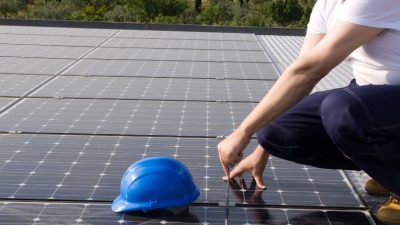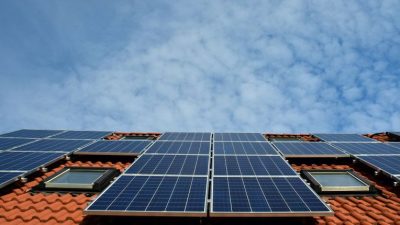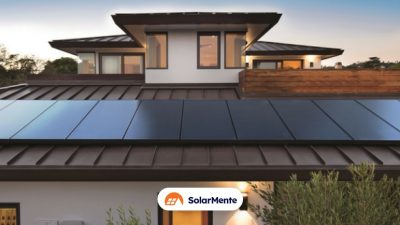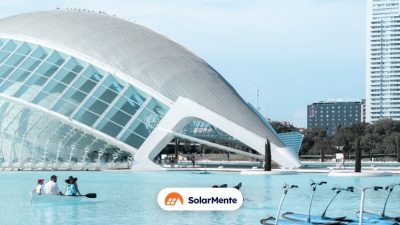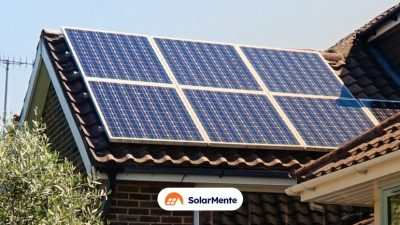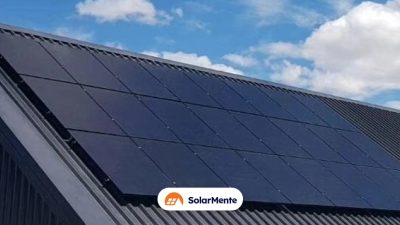Understanding the Impact of Shadows
To maximise the efficiency of a PV system, it is essential to understand how and why shading affects the performance of solar panels. Panels are designed to capture direct sunlight; however, when part or all of a panel is shaded, its ability to generate electricity is significantly reduced.
This is because solar panels operate as a network of connected photovoltaic cells, where shading on even a small section can impact the performance of the entire array.
The Effect of Shadows on Efficiency
The presence of shadows on solar panels can cause a decrease in energy production in two main ways:
Reducing the Current Generated: Each PV cell within a panel contributes to the total current generated. If one or more cells are shaded, they produce less current, which in turn reduces the total current of the panel and, by extension, the entire system.
Hot Spot Potential: Shaded cells not only generate less power, but can also become hotter than cells exposed to full sunlight. This temperature increase can lead to the phenomenon known as “hot spots”, which not only reduces efficiency, but can also physically damage the solar panel.
Impact on System Configuration
Photovoltaic systems typically connect multiple panels in series within a string. When a panel in this configuration experiences shading, its resistance to electric current flow increases, affecting the ability of the entire string to generate electricity. This is a particularly challenging phenomenon, as shading on a single panel can reduce the power output of panels that are fully exposed to the sun.
Design Strategies to Minimise Impacts
Given the importance of this challenge, solar engineers and system designers devote considerable attention to planning and designing installations to minimise the impact of shading.
This includes careful evaluation of the location of the installation, the orientation of the panels, and the selection of system components, such as microinverters or solar tracking systems, that can help mitigate the negative effects of shading.
Identification of Shadow Sources
A key strategy for optimising the efficiency of a PV system is to identify and mitigate shading sources. These can vary widely in nature and origin, and their impact can fluctuate throughout the day and with the seasons. Understanding these sources is a critical first step in designing and implementing measures to minimise their effect on solar energy production.
Common Sources of Shadows
- Vegetation: Trees and shrubs can cast significant shadows on solar panels. While the location and height of vegetation can provide clues to shading potential, seasonal dynamics and vegetative growth should also be considered.
- Architectural Structures: Buildings, chimneys, antennas and other built structures can create shadows that affect the efficiency of solar panels, especially in urban or densely built-up residential environments.
- Temporary Elements: Weather conditions, such as cloud cover, and seasonal phenomena, such as snow and ice, can temporarily alter the incidence of sunlight on the panels.
- Miscellaneous obstructions: Other objects, including light poles, water towers and adjacent structures, can also contribute to shadow issues.
Evaluation and Monitoring
Detailed analysis of the installation site prior to the implementation of the solar system is crucial to identify possible sources of shading.
Technological tools, such as computer simulations and photographic analysis, can predict the incidence of shadows throughout the day and in different seasons, allowing for more accurate planning.
Proactive Strategies
- Vegetation Planning: Regular pruning and conscious landscaping can significantly reduce the impact of vegetation on panel efficiency.
- Architectural Design Considerations: In the design phase of new construction, conscious decisions can be made about the location and height of buildings to minimise shading over areas intended to house solar panels.
- Adaptation to Seasonal Conditions: Selecting solar panels and system configurations that are less susceptible to temporary reductions in efficiency can help mitigate the impact of elements such as cloud cover and snow accumulation.
Continuous Monitoring
Since the environment around a solar installation can change over time, continuous monitoring is essential. The implementation of real-time monitoring systems can help identify the appearance of new sources of shading, allowing early interventions to adjust or modify the layout of the panels and maintain optimal system efficiency.
Solution and Mitigation Strategies
Once the sources of shading have been identified, the next step is to implement effective strategies to minimise their impact on PV systems. These solutions range from simple adjustments to the application of advanced technologies.
Immediate and Affordable Techniques
- Adjusting the Orientation of Panels:
- Modifying the tilt or direction in which the panels are pointed can help to avoid shading during critical hours of solar production.
- This solution is especially useful in small installations or in systems that allow manual adjustments.
- Regular Pruning of Vegetation:
- Keeping trees and shrubs trimmed can prevent the formation of shadows on the panels.
- This is one of the simplest and most effective measures, which also contributes to the general maintenance of the environment.
- Cleaning of Panels:
- Accumulation of dirt, dust, snow or leaves can create partial shadows on the panels, reducing their efficiency.
- Regular cleaning ensures that the maximum amount of sunlight reaches the photovoltaic cells.
Advanced Technology Solutions
- Use of Microinverters:
- Microinverters allow each panel to operate independently, which is crucial to mitigate the impact of shading. If one panel is shaded, the rest of the system can continue to operate at full capacity.
- This solution is particularly effective in systems with multiple orientations or inclinations.
- Solar Tracking Systems:
- Tracking systems adjust the position of the solar panels throughout the day to follow the path of the sun, maximising exposure to direct sunlight and minimising the incidence of shadows.
- Although they represent a more significant initial investment, they can offer a considerable increase in energy production.
- Panels with Diode Bypass Technology:
- Panels equipped with bypass diodes minimise shading losses by allowing current to flow through unshaded parts of the panel.
- This technology is useful to mitigate the negative impact of partial shadows.
- Adaptive Technologies for Shaded Roofs:
- Solar panels designed for shaded roofs use specialised technologies, such as split solar cells or energy optimising modules, which generate electricity even in sub-optimal conditions.
- These systems are ideal for installations in urban areas where shadows are unavoidable.
Efficient Planning and Design
The key to minimising the impact of shading and maximising the energy output of a solar installation lies not only in advanced technological solutions, but also in efficient planning and design from the very beginning of the project. This initial phase is crucial to ensure the long-term viability and efficiency of the solar system.
Comprehensive Site Analysis: Detailed assessment of the location, including the topography of the terrain and surrounding buildings, is essential to identify potential sources of shading. Mapping and solar modelling tools can provide an accurate view of how shadows will affect the system throughout the day and in different seasons.
Orientation and Tilt Consideration: Optimal orientation and tilt of the panels are critical to capture maximum direct sunlight. These parameters should be adjusted based on site latitude and specific environmental conditions.
Modular and Flexible Design: Implementing a modular design allows for future adjustments and modifications to adapt to changes in the environment or energy needs. This ensures that the system is not only efficient at the time of installation, but can remain optimal over time.
Using Simulations for Optimisation: Solar performance simulations are valuable tools for predicting the impact of shading and optimising solar system design. These simulations can help make informed decisions about panel placement and orientation to minimise energy losses.
Careful Component Selection: Choosing the right components, such as microinverters or solar tracking systems, can make a big difference in system efficiency in the presence of shading. Investing in high quality technology translates into better performance and greater savings in the long run.
Careful planning and design are the pillars on which the success of any solar energy project is built. These initial stages not only impact the energy efficiency and sustainability of the system, but also its economic profitability, so calculate your potential savings today and be amazed by the economic and environmental advantages that solar self-consumption has in store for you. At SolarMente, we are here to accompany you on every step of this exciting journey towards a greener and more economically sustainable future – start making a positive change now!







